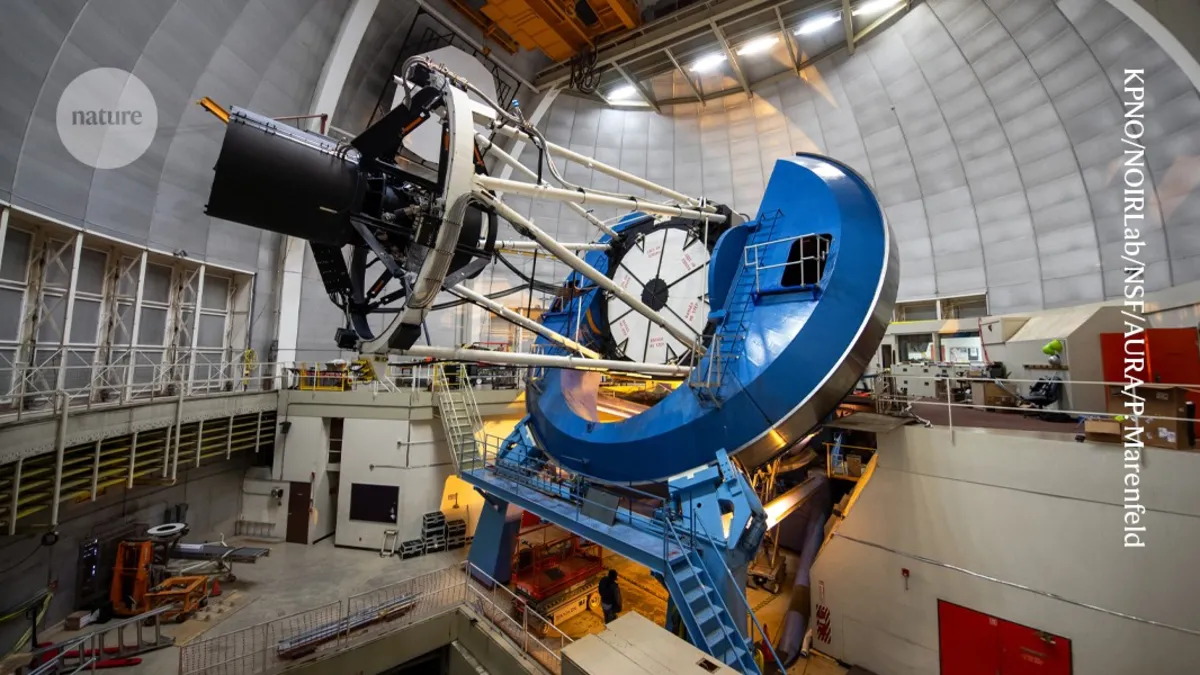
Recent research has provided compelling evidence that dark energy, the enigmatic force responsible for the accelerated expansion of the Universe, has weakened over the last 4.5 billion years. This groundbreaking effect was initially reported in April of the previous year; however, the latest results were presented on March 19 by the Dark Energy Spectroscopic Instrument (DESI) collaboration at a meeting of the American Physical Society in Anaheim, California. This new analysis is based on three years of data collection, a significant increase from the one year of data utilized in the findings announced in 2024.
“Now I’m really sitting up and paying attention,” remarked Catherine Heymans, an astronomer at the University of Edinburgh and the Astronomer Royal for Scotland. If these findings are confirmed, they may compel cosmologists to revise their current ‘standard model’ concerning the history of the Universe. Traditionally, this model has assumed that dark energy is a constant property of empty space, known as a cosmological constant, which does not fluctuate over time.
The DESI telescope, located at Kitt Peak National Observatory near Tucson, Arizona, plays a crucial role in these discoveries. It employs 5,000 robotic arms that direct optical fibers toward specific galaxies or quasars within its observational field. These fibers transmit light to sensitive spectrographs that measure the redshift of each object—an indication of how much the light waves have been stretched due to the expansion of space as they travel to Earth.
By analyzing redshift data, researchers can estimate the distances of celestial objects, allowing them to create a three-dimensional map detailing the expansion history of the Universe. Within this map, scientists examine the density of galaxies to identify residual variations from sound waves known as baryon acoustic oscillations (BAOs). These oscillations existed prior to star formation and have a characteristic scale that began at 150 kiloparsecs (approximately 450,000 light-years) in the early Universe. Over time, they have expanded by a factor of 1,000, now measuring around 150 megaparsecs—making them the largest known structures in the current Universe.
Tracking the changing size of BAOs enables researchers to reconstruct how the rate of the Universe’s expansion has evolved. Approximately 5 billion years ago, the expansion transitioned from deceleration to acceleration, propelled by dark energy. Until the recent data from DESI, all evidence in cosmology supported the notion of dark energy as a cosmological constant, suggesting that the Universe should continue to expand at an ever-increasing rate. However, the latest analysis from DESI indicates that cosmic expansion is currently accelerating at a lesser rate than in the past, challenging the assumption that dark energy is unchanging. This new evidence suggests that the energy density of dark energy—essentially, the quantity of dark energy per cubic meter of space—is now roughly 10% lower than it was 4.5 billion years ago.
The implications of these findings are profound and have raised numerous questions within the scientific community. As researchers continue to investigate the nature of dark energy, the results from DESI represent a significant step toward unraveling the mysteries of the Universe and understanding its ultimate fate. The gauntlet has been thrown down to physicists, urging them to explain these unexpected developments in dark energy and its impact on cosmology.